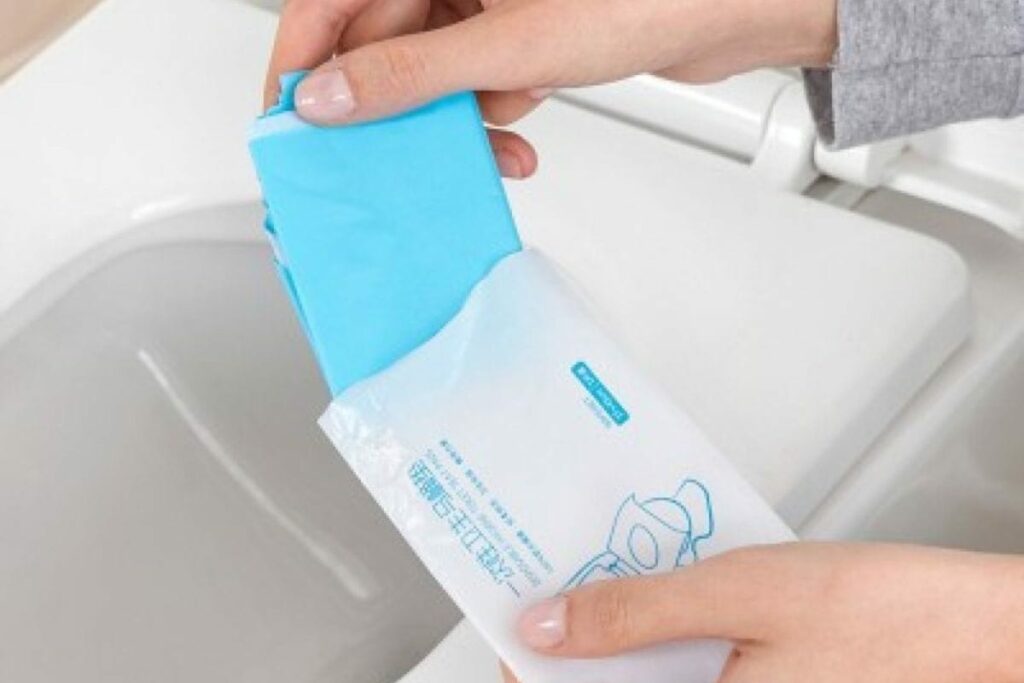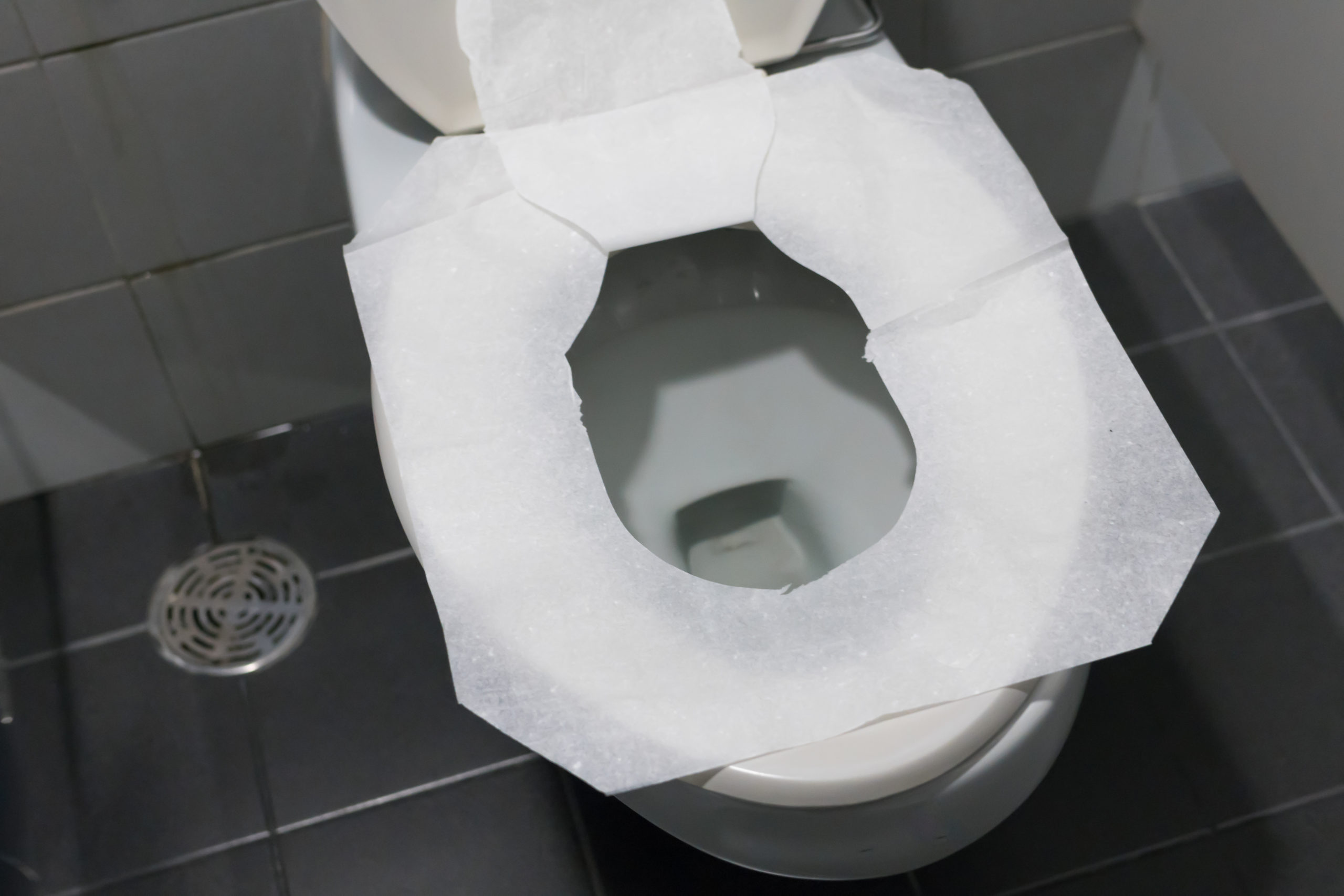Plumbers recommend only flushing toilet paper and of course poop and pee down the toilet to avoid clogs. However, many people use toilet seat covers for better hygiene. In this article, I will explain if toilet seat covers are flushable.
As a general rule, toilet seat covers are flushable. Popular brands such as Discreet Seat, SoNeat, and Gmark state that their toilet seat covers are flushable. Many brands also sell self-flushing toilet seat covers so you don’t need to flush them.
Some homes also have a septic tank rather than going into the municipal sewage system. Toilet seat covers are also safe to be flushed if you have a septic tank system. Below, I will explain how a self-disposing toilet seat cover works, what toilet seat covers are made of, and whether bacteria can get through a toilet seat cover.
How a Self-Disposing Toilet Seat Cover Works
Many toilet seat covers are labeled as self-disposing or can be self-disposing. It can be a bit confusing how a self-disposing toilet seat cover works because a toilet seat cover sits on top of the toilet seat. So, this is how a self-disposing toilet seat works.
A self-disposing toilet seat cover works due to a flap that is attached to the inner part of the toilet seat cover. This sticks to the side of the bowl, and/or gets caught by the water as the toilet flushes, and pulls the toilet seat cover into the water.
Although the top of a toilet seat cover doesn’t contain much bacteria after use, the underside can. Therefore, it’s more hygienic to not touch a toilet seat cover after it has been used. And it’s a lot more convenient.
Will toilet seat covers clog a toilet
In general, toilet seat covers will not clog a toilet. Toilet seat covers are made of very similar material to toilet paper. It’s thin and turns to mush like regular toilet paper. It’s widely recommended by plumbers to avoid flushing too much toilet paper at once. Due to the fact, that it can create a clog.
Therefore, if you need to flush an unusually large amount of toilet paper down the toilet, it’s best to tear off the flap on a toilet seat cover before you flush. Doing so will keep the toilet seat cover on the seat, and reduce the total amount of paper being flushed. As a result, reducing the risk of a clog.
Is a toilet seat cover better than putting toilet paper on the toilet seat

A study found that the bacteria present on public restroom toilet seats are normal skin flora. And doesn’t pose a significant health risk. Therefore, toilet seat covers have not been made mandatory in public restrooms (source).
It was also found that a toilet seat cover is much better than toilet paper. It was found that the average amount of toilet paper a person uses when putting it on a toilet seat for hygiene is 14 sheets. Whereas, a toilet seat cover is the same as 7 sheets of toilet paper.
Therefore, a toilet seat cover is better for reducing toilet clogs. They are also easier to place. So, where possible you should use a toilet seat cover instead of placing toilet paper on a toilet seat to cover it.
What Are Toilet Seat Covers Made Of
Toilet seat covers are a papery type material but are noticeably different from toilet paper. Because only toilet paper and human waste should be flushed down a toilet, it’s important to know what toilet seat covers are made of. Here are the materials used to make a toilet seat cover.

As a general rule, disposable sanitary toilet seat covers are made of toilet paper and a water-soluble plastic film known as Polyvinyl Alcohol (PVA or PVOH). The plastic film is located on the top side of a toilet seat cover.
According to a patent described here (source), the water-soluble plastic layer is stuck to the toilet paper using a water-soluble glue. When it gets wet it breaks down. This allows for toilet seat covers to be flushed down the toilet without creating a clog.
Can Bacteria Go Through a Toilet Seat Cover
Toilet seat covers are made of a thin, papery material that is reasonably thin. It provides a physical barrier between the toilet seat and your bum. But, can bacteria go through a disposable toilet seat cover?
Bacteria do go through a toilet seat cover according to analytical chemist Harry Hertz. Disposable toilet seat covers have pores in the material that are larger than bacteria. However, toilet seat covers reduce the number of bacteria from the toilet seat that transfers to your gluteus maximum.
The good news is that the bacteria on a toilet seat are non-harmful, and studies have shown that they don’t pose a significant health risk. So, any bacteria that do get through a disposable toilet seat cover isn’t of any concern.
Are Toilet Seat Covers Biodegradable
Toilet seat covers aren’t as soft as regular toilet paper, and you may have noticed they have a plastic layer on one side. Plastic generally takes a very long time to decompose. So, here’s whether toilet seat covers are biodegradable.
In general, toilet seat covers are biodegradable. Toilet seat covers are made of toilet tissue paper, glue, and a plastic called Polyvinyl Alcohol (PVA or PVOH). The glue and plastic are water-soluble. As well as, the toilet tissue paper. Therefore, a toilet seat cover completely breaks down.
Toilet seat covers turn to mush, and break down very easily if you leave one outside exposed to the elements. They break apart easily into smaller and smaller pieces until they completely decompose. However, this process can take 1 to 3 years (source).
There are numerous types of bugs that eat paper. If toilet paper is left in a place where these bugs are present such as silverfish, termites, and booklice, they can make light work of a piece of toilet paper.

Amos Christen graduated with a bachelor’s degree in Interior Design from Drexel University — Philadelphia, PA. Since 2003, Amos has worked with top interior design professionals in this area, including architects and interior/graphic/lighting designers. As a skilled interior designer, Amos Christen is highly versed in fine arts and crafts and uses that to supplement his main area of expertise. He often publishes articles related to home décor on several websites, including Sprucetoilets.com, Sprucebathroom.com, and Mybesuitedhome.com. He also contributes to leading interior design magazines.
